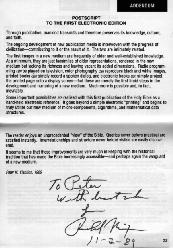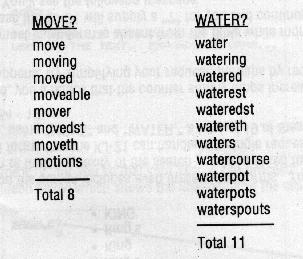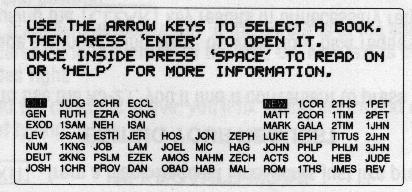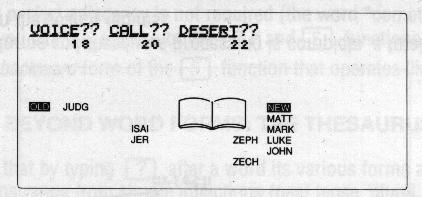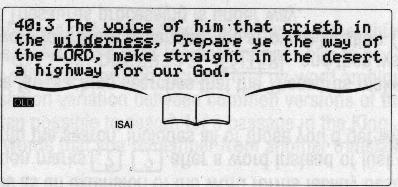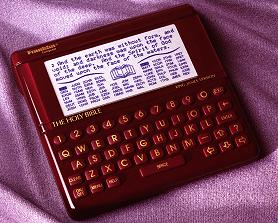
The first hand-held electronic publication of the
Holy Bible. Model KJ-21 King James Version
| Hand-held electronic book, Franklin Electronic Publishers | 1989-... |

Description: The Franklin KJ-21 was introduced in 1989 and marked the first publication of the Holy Bible in hand-held electronic form. This King James version was followed by a Revised Standard Edition (model RS-22), and the New International Version (NIV-20).
Background: Before publication of the Bible, Franklin's electronic publishing business was limited to simpler dictionary-based reference books. The Bible line did not represent incremental evolution of earlier hardware and software designs. Rather it marked the development of an entirely new platform intended for the publication of books in general. The heart of this development was a search engine, the descendant of which is still used in Franklin products.
Like earlier Franklin products, the Bible was designed for ease of use. To use the product one has only to find the ON button, type something, and decide to hit ENTER. A good portion of the product's functionality is accessible through this simple mode-free interface. What the user types is examined and the nature of his inquiry is inferred. For example, if "JOHN 3 4" is typed, the Bible is opened to the corresponding chapter and verse. But if "meek inherit" is entered, a search is performed because the entry cannot be interpreted as the address of location within the Bible. A great deal of effort was devoted to making this interface simple and friendly. Just about any way of specifying an address works equally well. "JO3 4" will take the user to the same place as the entry above.
The search engine views the user's query as an ordered list of keywords. There is a small "stop" list of common words. After the user has hit ENTER, the product shifts any stop words to a smaller font providing an indication to the user that these words are somehow less important. All locations in the book that match all of the query terms within an adjustable proximity window are then found. A term need not match exactly (case is for example ignored). A two-level thesaurus feature is provided. It is accessed by adding one or two "?" symbols following a term. A single "?" indicates that the term should match any lexical variation. The list of these was build by hand with the help of online dictionaries. Entering "??" indicates that words having similar meaning should be included in the search. This thesaurus too was built by hand (Kirk Kanzelberger). The result is a simple but highly effective search interface to this book.
The product's LCD display features the names of all 66 books of the bible on its lower half. The results of a search are displayed by illuminating the corresponding books. As a result the user grows accustom to a fixed spatial map of the book and can rapidly interpret results. A book is then selected using arrow keys and ENTER brings up the matching text. Navigation forward and backward to other matches is then possible. The LCD's text pixels are not simple rectangles. Rather they are "S" shaped curved regions that when combined to form a letter, produce a softer effect. The large effort devoted to the LCD design was in large part to compensate for the small number of actual pixels we could afford to include in a 1989 consumer product. But the result is an effective design that I believe contributed to the product's ultimate success.
The search engine operates on a highly compressed proprietary data structure that weaves both text and index into a single design. The book's roughly 4.5 MB of raw ASCII text are compressed to 1MB including "indices".
The physical design of the product (Minh Luong) also represented a major effort and I am confident was a large part of its ultimate success.

